The 30-Second Review
Some people use tablets for portable entertainment; others use them as a tool for staying productive on the go. After speaking with tech experts and digging into user reviews, we found that the best tablet will have fast processing speeds and a clear display, plus intuitive functions that match your needs.
Best for Entertainment
A vibrant display, a speedy processor and access to the best range of entertainment and media apps out there make the iPad a great option for reading, streaming, and web browsing — all for just $330.
Best on a Budget
Amazon Fire HD 8
Not as fast, and limited app options, but it’s only $80 and good for casual reading and streaming. Amazon Prime account-holders can also access tons of free shows.
Not as fast, and limited app options, but it’s only $80 and good for casual reading and streaming. Amazon Prime account-holders can also access tons of free shows.
Best Laptop Replacement
A lightweight laptop alternative, the Surface Pro lets you run both apps and full versions of software, from Word to Excel. You can also split your screen and run multiple programs at once for easier multitasking. Starts at $800.
Best for Creative Types
iPad Pro 10.5
Offers the same split screen multitasking capabilities as the Microsoft Surface. It’s limited to apps — no full software — but it’s compatible with the incredibly intuitive Apple Pencil and great for sketching, drawing, and graphic design.
Offers the same split screen multitasking capabilities as the Microsoft Surface. It’s limited to apps — no full software — but it’s compatible with the incredibly intuitive Apple Pencil and great for sketching, drawing, and graphic design.
Editor's Note
- November 1, 2017 - We’ve updated our review to focus on popular tablet models that have entered the market since we originally published our article in 2015. Our methodology and top picks have been updated to reflect these changes.
The Best Tablet
- iPad 9.7Best for Entertainment
- Amazon Fire HD 8Best on a Budget
- Microsoft Surface ProBest Laptop Replacement
- iPad Pro 10.5Best for Creative Types
The Apple iPad 9.7 is the best tablet for the average user. If you’ll use your device mainly to check social media, watch videos, or engage in casual gaming, it’s an unbeatable value: At $330, the iPad is half as expensive as tablets with similar specs, and it’s a joy to use. It’s got a beautiful display, it loads apps quickly, and it’s small enough to be easily portable — a little wider and taller than a paperback book. As a company, Apple also boasts the greatest number of tablet-optimized apps, giving you the best experience when gaming, streaming, reading, or simply web browsing.
The Amazon Fire HD 8 can’t compete in terms of speed and sleekness: Image quality will be slightly grainier, and it’ll take an extra couple of seconds to open apps. But for only $80, it’s a respectable runner-up. The Fire is especially good for reading and video streaming: Amazon has optimized the tablet to connect easily to your Amazon account, and Prime members have access to a wealth of free shows. But the tablet doesn’t support Google apps, which means no Chrome web browsing and no YouTube (though you can access the web versions of Google services through its built-in Silk browser).
For serious computing, the Microsoft Surface Pro is the best tablet — to the point that it functions as a laptop replacement. Its Windows operating system allows you to run full versions of software, like Excel and Microsoft Word, and multitask between multiple apps and programs. A keyboard and stylus can be purchased separately, and we found both attachments comfortable and easy to use. But for $800, it’s best to have serious plans for the Surface before you buy.
The Apple iPad Pro 10.5 is another great option for getting work done. It’s geared toward graphic designers, art students, or anyone who does a lot of visual work: the iPad Pro’s main draw is its compatibility with the Apple Pencil, a stylus that feels like a real pencil, right down to its pressure sensitivity and lag-free performance. The iPad Pro can’t run full versions of software, which means you’re better off with the Surface if you work with a lot of spreadsheets or word documents. The iPad Pro sits in the same price tier as the Surface, at $650 — plus an extra $100 for the Apple Pencil.
How We Found the Best Tablet
We focused on crisp resolutions and fast processing speeds.
To even be in the running for “the best,” our picks needed two things: fast processing speeds and high resolutions. Or, in plain English, they needed to run quickly and look pretty.
For screen resolution — which affects how crisp and clear images are — we followed PCWorld’s advice and set 1280x800 as our minimum requirement, a bar that even our $80 Amazon Fire budget pick could hit and most of our finalists far exceeded. Anything lower is likely to result in a grainy, unattractive display.
When it comes to CPU (central processing unit) speed, tablets rely on a universal measurement called gigahertz — or GHz — which measures how many times per second the tablet’s processor can perform actions (the higher the number, the faster things happen). We only looked at tablets with a CPU of at least 1 GHz. The Amazon Fire squeaked past with 1.3 GHz, which means you’ll wait a second or two when you open an app. The Microsoft Surface operates at 2.5 GHz, so fast we didn’t even have time to think the word “loading” before our page opened. Anything below our benchmark brings the risk of a glitchy touch screen and frustrating load times (and is likely to have trouble streaming in HD).
“The most important part of the tablet is how you interact with it. A poor touchscreen experience means a poor user experience - you will be frustrated whenever you use the tablet.”
We wound up with fewer contenders for “best” than we expected. The tablet market is slowing down — people replace tablets less frequently than phones, so there’s little incentive for new companies to enter the space when giants like Apple already offer the best displays and fastest speeds. We looked for lesser-known products to consider, but the results weren’t impressive: The HPX360, for example, boasts mediocre display quality despite being more expensive than an iPad ($570 versus $330). The Lenovo Miix720 only holds 16 GB of data despite a $1250 price tag.
Our list ultimately included four tech giants — Apple, Samsung, Microsoft, and Google — plus two tablet newcomers that held up under our scrutiny: Amazon and Huawei. We selected the most popular model from each brand, pulling bestsellers from Amazon and BestBuy. For the most part, our list consisted of each company’s most recently released tablet, but we also brought in a couple of older models that continue to be well-regarded, testing both the 2017 Microsoft Surface Pro and the 2015 Microsoft Surface Pro 4, for example.
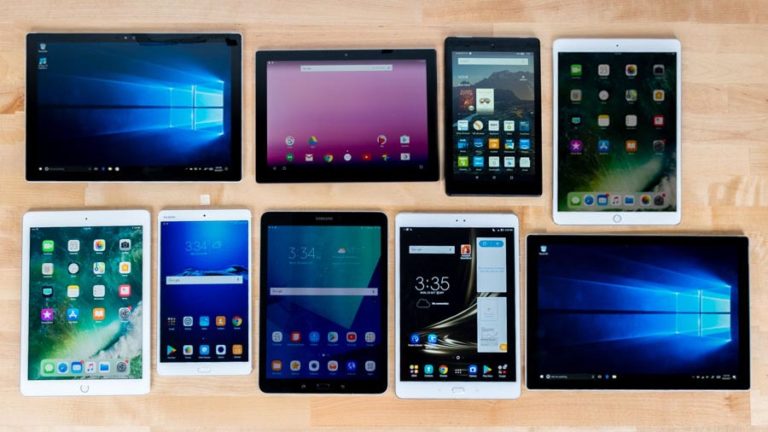
Our Finalists for Best Tablet
- Amazon Fire HD 8
- ASUS ZenPad 3S 10
- Google Pixel C
- Huawei MediaPad M3
- iPad 9.7 “
- iPad Pro 10.5″
- Microsoft Surface Pro
- Microsoft Surface Pro 4
- Samsung Galaxy Tab S3
Then we dug into what people actually do on their tablets.
In order to find the best tablet, we had to understand what that tablet should do best. So, we dug into who was actually seeking out these devices and how they were being used and found two main scenarios:
Tablets as media player: For people who want to stream television, read books, play games, and watch movies on a larger and more enhanced screen than their phones. BI Intelligence found about 80 percent of tablet owners use their devices for games, social media, and entertainment. Research unearthed by Rosetta was similar, with e-books and magazines as a top use (38 percent) closely followed by checking email (33 percent) and social networking (29 percent).
Tablets as laptop replacements: For those who want to take notes, multi-task, or work on documents or spreadsheets without lugging a computer around. More and more business professionals and schools (one-third of US students) are adopting tablets as lightweight laptop alternatives.
Knowing how you'll use your tablet is important because it directly affects which one you should buy. The new iPad Pro has the most impressive spec sheet of all our finalists, for instance, but that doesn’t mean it’ll actually be the best for everyone. After the honeymoon phase, the initial six months of ownership when you’re likely to try out every single feature, most people fall into routine patterns and tablet usage declines, at which point the iPad Pro will be overkill for most people. It would be like buying a handmade, Italian copper cookware set but only ever using it to toast quesadillas and steam broccoli.
… and which of those fancy tech specs matter most.
From here, we prioritized the features that were most likely to affect each user group. Specs like the camera resolution, for example, didn’t hold much weight after we discovered tablet owners were only using cameras for occasional video chatting — after all, it’s not very practical to lift up your tablet to snap a selfie when your phone is smaller and likely has a better camera.
We weren’t too concerned with aspect ratio either — the portion of the screen that looks like actual screen versus a black lining. Tech reviewers will often thrown in this number without addressing why it matters. And frankly, that’s because it doesn’t. By now almost all tablets have a good ratio, and we didn’t notice any significant differences between our models.
For entertainment and media use, we kept it simple:
You really don’t need all the bells and whistles if you’re just watching movies, checking email, or reading ebooks. But anything that effects that experience is vital.
Speakers: While most of your audio media might flow through headphones, the location and caliber of a tablet’s speakers can affect your entertainment experience. The Samsung Galaxy Tab S3 is acclaimed for its four speakers surrounding the edges, giving it a louder and more surround experience than the quieter iPad, which features just two speakers on the bottom of the device. But we discovered loudness isn’t the only factor: The ASUS ZenPad S3 10 often received complaints from users because it had poor sound quality, and the speakers weren’t front facing.

The Samsung Galaxy Tab S3 features a pair of speakers on the top and bottom of the tablet.
Operating System: The biggest difference between our finalists lies in their operating systems. The OS completely dictates the way you’ll interact with the tablet — and people often have strong personal preferences.
- The biggest draw for Apple’s operating system is its massive app store and easy-to-learn interface. It’s easy to figure out even if you’re not particularly tech-inclined, but if you are a technical type, you might find the system limiting: You can move apps around on the home screen, but that’s the only real customization option Apple offers.
- Android gives you more flexibility. You can change color schemes and install widgets onto your home screen that will live update the weather or display your daily calendar, for example. Android tablets have a very passionate fan base, and we made sure to include Android-based tablets like the Lenovo, ASUS, and Huawei in our list of finalists.
But we weren't sold on Android. Android-based tablets have fewer apps, which means that many of the apps you want to download are likely to be stretched-out versions intended to run on much smaller smartphone screens. And because Android is an open-source system, any product manufacturer can create their own version of it — these limited versions won’t always receive standard Android updates, which translates to dated interfaces, no security updates, and a restricted ability to update apps. In fact, the Huawei MediaPad seemed to think it was just a big phone, as it prompted us to “protect your phone” with a screen lock code during setup. Its Android based operating system wasn’t tablet optimized, just resized from its mobile version. For the average user, they’ll be happier with an Apple O.S. unless they have strong feelings about Android.
Price: If you’re using your tablet as a secondary media device, there are plenty of good options in the $80 to $600 range. We found that spending more than this tends to be overkill: You wind up paying for features that the average user will barely notice or might never use.
To supplement or replace your laptop, there are a couple of extra considerations:
In order to truly replace a laptop, these tablets require a few more features that will elevate the convenience of productivity.
Accessories : Typing emails or editing documents on a touchscreen keyboard gets frustrating quickly. If you’re hoping to get serious work done, you’ll need a tablet with a decent, portable snap-on keyboard. The Surface Type Cover, Galaxy Tab Key Cover, and the Apple Smart Keyboard were the three contenders on our list to achieve this. We were hopeful about the keyboard for the Google Pixel C, but it was heavy and didn’t easily collapse after use, making it harder to carry around and store. Stylus options were our second consideration: They’re more precise than a finger for handwritten notes and sketches, and hitting that tiny red ‘X’ in the corner of a popup advertisement. We loved the Apple Pencil and the Surface Pen, which both felt natural to hold and had no noticeable lag between the strokes that we made and the marks that showed up on our digital sketchpads.
The Google Pixel C's keyboard accessory attaches to the tablet via a wide magnetic tab that was too stiff to maneuver easily.
Operating System: The Windows operating system is designed for productivity, giving the Microsoft Surface a strong edge. This OS closely mirrors traditional PCs and allows you to run software, multitask with multi tabs and side-by-side apps, and easily work on PDFs and spreadsheets. We found nothing that the Windows Surface Pro couldn’t match our laptop at. But in light of Apple’s latest update, iOS 11, the iPad Pro is starting to catch up: While it still looks like an iPad (no resemblance to a Macbook), it does have some of the same screen splitting and files functions that allow you to multitask. But those additional features are still limited in comparison to Windows 10: The split screen function, for example, allows you to split the screen and run two apps at the same time. But with Windows, you can arrange more than just two apps — you can continue to layer them, as you would on a traditional laptop. In short, the Windows OS still lets you take better advantage of screen real estate.

Ports: This laptop perk is often skipped when it comes to tablets. USB and microSD ports allow you to connect your camera, upload photos, transfer files, and add external storage. The versatility of taking our data from one tablet to another computer or charging our phones via tablet, was a laptop feature we weren’t quiet willing to sacrifice. The Google Pixel C does have one USB port, a courtesy we appreciated but which couldn’t compare the the five ports that the Microsoft Surface Pro sports.
Price : Tablets on our list with more PC-oriented features were typically more expensive. The Microsoft Pro starts at $800 and the Lenovo Miix720 peaked $1,250. If you’re looking to replace you laptop, be prepared to invest an extra $200-$600.
After taking these considerations into mind, and then cross-checking our findings by reading through hundreds of user reviews and noting what people loved and hated about their own tablets post-purchase, we found our picks.
Our Picks for The Best Tablet
Users and experts agree, the iPad is truly an everyman's tablet. It’s portable, affordable, and has great battery life. And with Apple’s latest update, iOS 11, it’s the better than any iPad before it.
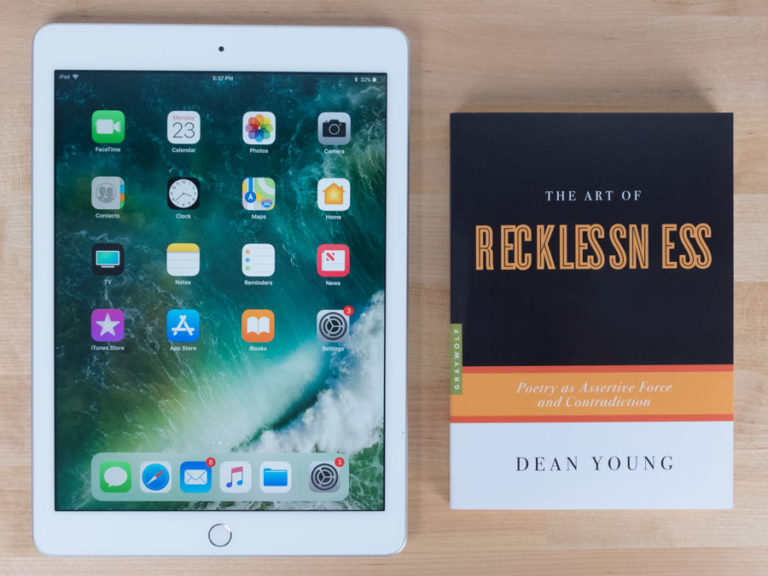
The iPad has a great display and lag-free performance, giving you crisp, high-definition visuals in record time. A slightly lower resolution doesn't automatically mean a blurry picture or visible pixels, but a high-resolution screen is noticeably nicer to look at for long periods of time. The iPad’s resolution (2048 x 1536) is the same as the $600 Samsung Galaxy Tab S3, but at $330, the iPad is drastically more affordable.
A huge reason Apple dominates the tablet space is their apps. When scrolling through the Apple App Store, you can filter your search for apps that have been made for the iPad. Hulu and Sim City, for example, have both been altered to meet the needs of a tablet. Apps that aren’t redesigned for tablets can look stretched out and blurry when they’re opened on screens double the size and with double the resolution of a smartphone. Other app stores don’t offer nearly as wide a range. Google Play (for Android tablets), encourages their app developers to optimize for tablets, for example, but it’s difficult to find options beyond the store’s top 250 apps.
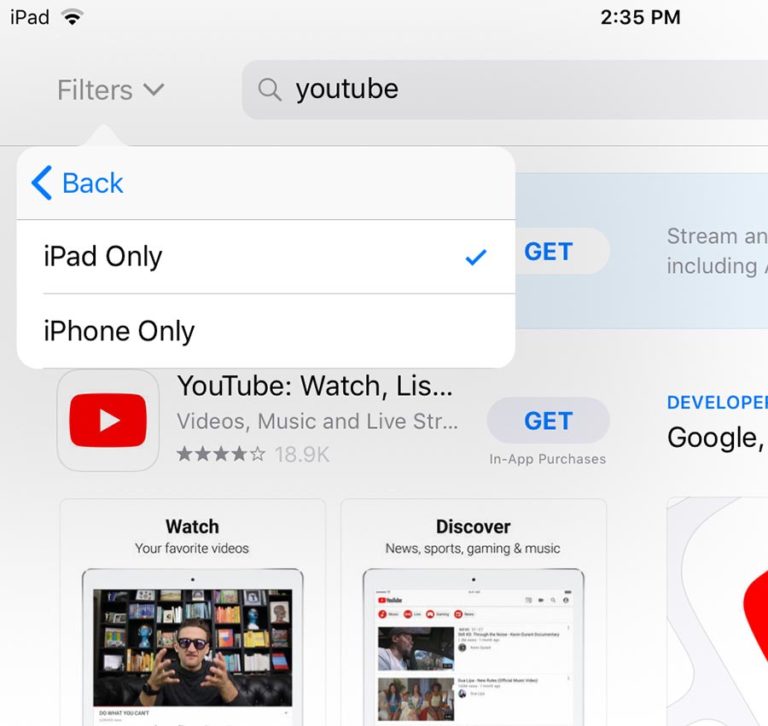
Apple's App Store lets you filter searches for iPad-specific versions of iOS apps.
Just as robust as their app store, is the Apple ecosystem. Because their products are so popular, third party companies make tons of accessories to support and customize the product. You’ll find accessories for other tablets, but because of Apple’s popularity you’ll have a lot more options to find one you really love and personalize the device. The Disney Store isn’t selling Huawei MediaPad M3 cases, for example.
At 9.7” it’s a bit taller than a paperback book, and is difficult to hold for long periods of time. It’s a bit slippery and its tallness can make it feel tippy, with users also noting that it’s thicker than, say, the iPad Pro. If you’re looking for something solely for e-reading, it could be too strenuous. But the battery will certainly last long enough if you’ve got the stamina, Apple promises 10 hours of battery life but most users comment they can go for closer to 13 with constant use.
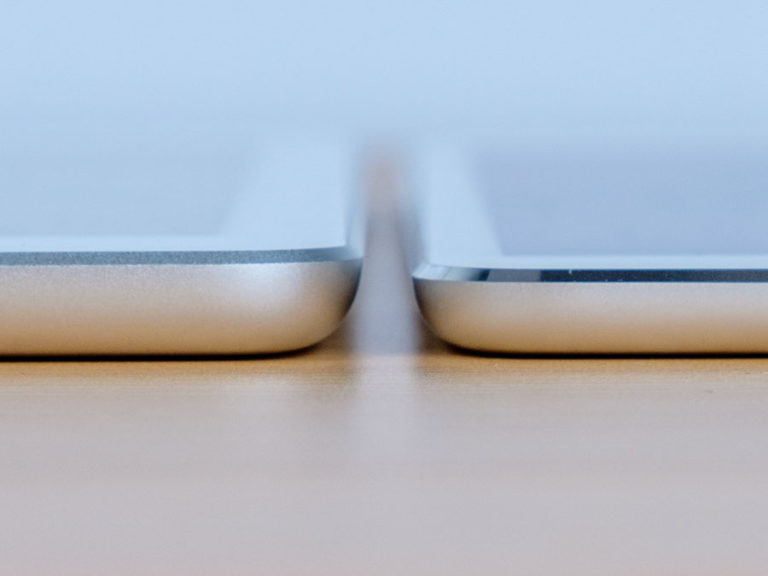
The 9.7-inch iPad, left, is a bit thicker than the higher-end and more expensive 10.5-inch iPad Pro (right).
If you already own an iPad, there’s no need to upgrade to this model unless you want iOS 11 functionality: The latest update is meant to make the iPad experience more distinct from the mobile Apple experience and is aimed at increasing productivity. A new home dock hovers at the bottom of the main screen and closely resembles the bar that holds apps on a Mac. You can swipe up to access favorite apps, much like bookmarking a web browser. Multitasking is also possible, allowing you to run two apps simultaneously or hover one (like Twitter or Spotify) over another. These small differences don’t completely revolutionize the iPad, but because the experience is more seamless and you can consolidate your media consumption, you may find yourself using the tablet more often.
Best for Budget Entertainment
Amazon Fire HD 8Dirt cheap, with decent image quality, excellent Amazon compatibility, and a limited range of apps.
For just $80, the Amazon Fire HD 8 is easily the best tablet on a budget. It's hard to fault this tablet for any of its flaws, and you probably get more than what you pay for. Think of it as the Top Ramen of the tablet world — no culinary wonder, but cheap enough that it feels silly to complain.

It runs an operating system called Fire OS, based on a limited version of Android. Its interface is really basic and doesn’t give a ton of freedom for customization: Scrolling through the tablet takes you to different media home bases like Shop, Movies, or Books, and other purchased-based entertainment. While you can change your screensaver, the different destinations on the Fire feel very much like you’re always out shopping, never like you've come home to enjoy your purchases. At the same time, it's super simple and easy to navigate.
Amazon has optimized this device for its own service, which means that its app store is missing all Google apps — like Youtube and Chrome. It’s best to have an Amazon Prime account to really take advantage of the tablet, as Prime users will have access to a catalog of free books, movies, and TV shows. The Fire also pairs with Alexa, Amazon’s virtual assistant AI. Chat her up for easy online ordering, to answer a search question, or for audiobook playing. And for an extra $2 per month you can get Amazon FreeTime, which grants access to tons of kid-friendly content.
It’s extremely easy to set up profiles for different users, including children’s profiles that allow parents to view activity on a parent dashboard. The Fire is also pretty sturdy: You won't cringe every time it's dropped to the floor.

If kids and parents will both be using the Amazon Fire, it's easy to set up separate profiles.
Reviews noted it has decent battery life but weak speakers (best used with headphones). It makes for a great gift for an older relative who’s venturing into online shopping or a more versatile kids tablet that will still be usable once they’ve grown out of Dora.
Runner-Up for the Android Loyal
Samsung Galaxy Tab S3More customizable, but also more expensive and with limited app options.
Android has a passionate fan base, but experts and usersagree — Android is not a tablet operating system. Because of its lower user base, developers simply aren’t motivated to optimize apps for Android. PCMag lays out some comparative visuals, that really show how unpleasant a mobile app looks on a tablet. For the price, we don’t think the Samsung is a great pick.
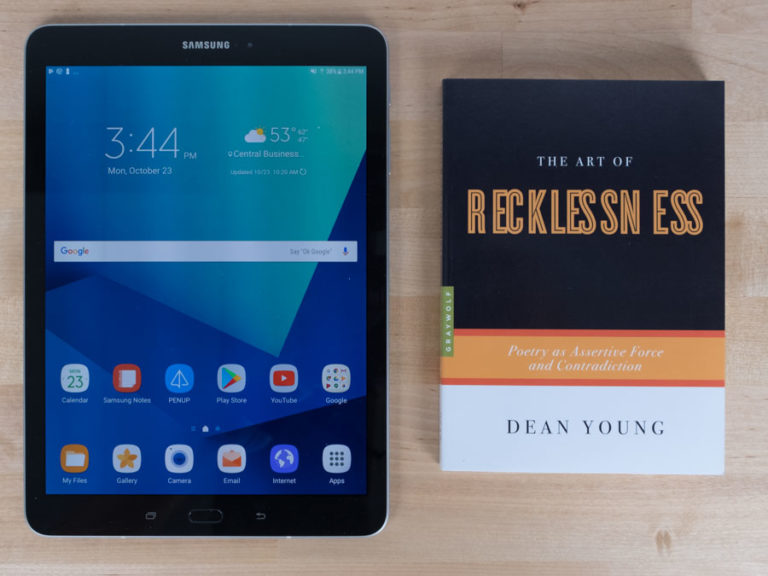
That being said, the Samsung Galaxy Tab S3 runs Android as well as can be expected. It has four speakers, which create a louder sound than the two speakers you’ll find on the iPad. Louder doesn’t necessarily mean better quality, but the design includes an accelerometer that adjust the audio depending on whether you’re holding the tablet in landscape mode or portrait mode.
It has a "Super AMOLED" display, which means the pixels are more quickly activated and the screen appears brighter. Even compared to the higher resolution on the Surface Pro, the Samsung’s colors do pop further.

Samsung's Super AMOLED display (left) offered more vibrant colors than other highly rated displays, including Apple's iPad Pro (right).
If your heart is set on Android, the Samsung Galaxy comes the closest to matching the iPad’s benefits. But at double the price of the iPad, it’s hard to justify for the average user.
Best Laptop Replacement
The Surface Pro improves upon the issues that the Surface Pro 4 had (you can essentially think of it as the Surface Pro 5). With better battery life, a great display, and a lovely keyboard, this is the best tablet for replacing a laptop. Traditional laptop uses like writing, taking notes, examining spreadsheets, checking emails, and multitasking are possible on the Surface Pro. It's a bit too big just for simple gaming (tilting the Surface would send you over a cliff in Temple Run), and its computing abilities would be overkill if you’re just planning to watch YouTube.

The Surface Pro runs on Windows 10 Pro, the latest Microsoft operating system. You get all the functionality of a desktop computer, but you can also switch modes for a tablet-designed interface. (Think start “bar and desktop” versus “big app grids and continuous scrolling.”) One of the big bonuses of that full functioning Windows OS is that you can run full versions of software: You won’t have to slow down, learn a new layout, or make any sacrifices in productivity. With systems like Apple, you might find yourself saving more complicated multi-window and spreadsheet tasks for a full computer.
Tablets that branch from smartphone operating systems (like Android or iOS) come with limited computing designation. Ideally, you wouldn’t draft a proposal or edit a photo on your smartphone, because you’d spend half the time just scrolling around and orientating the information. But the Surface Pro runs a desktop operating system that’s been optimized for touchscreen tablets — it’ll look just like a smaller computer.
Students and professionals will appreciate its USB port and microSD slot, for external drives and storage. Digital artists and media creators will need its large range of storage for saving and editing large files. The Surface Pro starts at 128 GB, and you can even purchase one with 1 TB of internal storage.

The Surface Pro's onboard microSD card reader (left, tucked beneath the kickstand) and full-size USB port (right) help boost its productivity chops.
Notetaking and sketching are also easy thanks to the Surface Pro’s impressive accessories. The keyboard is compact without being cramped and has a nice crisp press into the keys.
The Surface Pen is a point of highlight for the Surface Pro (although you’ll need to purchase it separately), as it's fast and highly pressure sensitive. In terms of specs, it’s nearly identical to the Apple Pencil, and we found both equally responsive. The Surface Pen is shorter and doesn’t mimic an actual pencil as much as the Apple Pencil, with a shape that some users report is easier to grip. The Surface Pen has a matte surface that is less slippery than the Apple Pencil, with a magnetic strip that snaps to the side of the Surface Pro for easy storage.
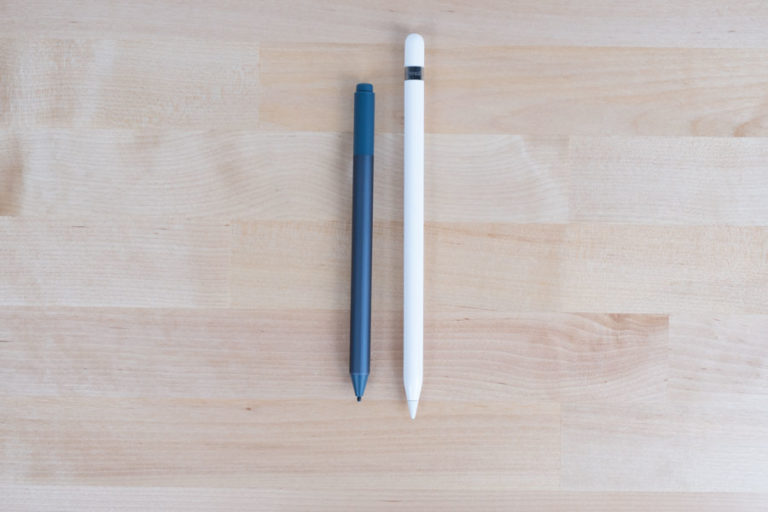
And while the Surface is a workhorse, don’t count it out for media usage: It has an impressive display and will stream the second season of Stranger Things beautifully. Its screen resolution (2736 x 1824) is better than the iPad Pro. If the Surface Pro was one of the TVs on display at Costco, you’d stop to watch Moana in awe.
The downsides? It’s expensive, and occasionally buggy. After purchasing the paired accessories — and depending on the storage you choose — final cost can run from $1,000 to $3,000. Historically, Windows is also not quite as reliable as Apple computer products: A recent Consumer Reports National Research Center study found an estimated 25% of Microsoft tablet and laptop owners experienced problems with their tech within their first two years of ownership. On the plus side, Microsoft frequently releases micro updates to address these issues and Consumer Reports found the Surface to perform excellently in their lab tests.
The verdict? Consider upgrading if you have the Surface 3 or older, and consider the Surface Pro a worthwhile investment if you’re a student or professional looking to ditch a heavy laptop.
Best for Creative Types
iPad Pro 10.5More limiting than the Surface Pro, but compatible with the extremely intuitive Apple Pencil.
The iPad Pro is fast and packed with tablet-optimized apps. But it’s also expensive (starting at $650) and excessive for most casual tablet users. Though the resolution is higher and the processing speed is faster than previous models, those differences are subtle to most users. Its main draw is its compatibility with the impressively realistic Apple Pencil ($100).
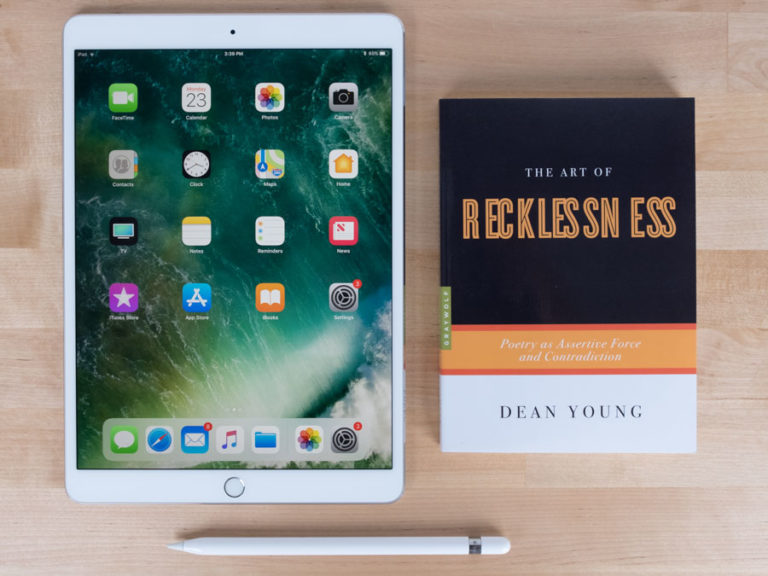
The Pencil has pressure sensing technology that can read how heavy and dark your strokes and lines are. It’s also sensitive to tilted use for easy shading. We found the Pencil and the Surface Pen to be equally responsive, but in terms of sheer specs, the Pencil is the fastest stylus out there, which means that there’s never any noticeable lag as you’re writing or drawing. It’s like using an actual pencil — so much so that calling it a stylus feels misleading. (You can also purchase a keyboard for an extra $160.)
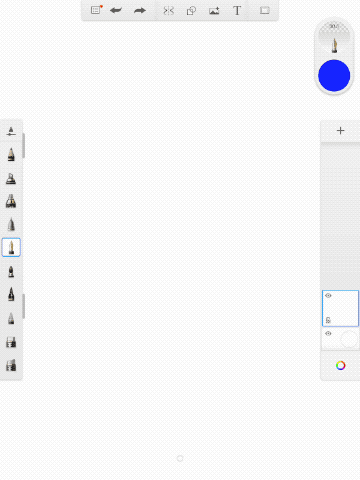
Artists, students, and creative professionals can use the iPad Pro as something closer to a laptop than previous iPads have allowed, although if your work tends to be word document or spreadsheet heavy, we’d still recommend the Surface Pro instead. But with the latest iOS 11 interface upgrade, the iPad Pro now allows for split screen and share screen optimizing, so you can utilize two apps at once. You can have your class notes open on one half of the screen, and anatomy sketches on the other. Or manage your iTunes playlist while working on concept drawings. The new OS also upgrades the Apple Pencil, making handwritten text searchable — convenient if you prefer note-taking by hand. Compared to the Surface Pro, you still won’t be floating layers of internet tabs, however, and you’re still restricted to app versions of all software.
Apple’s new A10X processor (the CPU), also makes it lightning fast in everything from video editing to gaming, an improvement only noticeable if you’ve logged a lot of hours on a slower device.
All in all, the iPad can do most of the things a laptop does — and thanks to the Apple Pencil, a couple of things that it can’t. It’s great if you really care about tablets, if you’re planning to use the Apple Pencil frequently, or if you want a work tablet but aren’t a fan of Windows OS. If you’re just looking for a tablet for casual video viewing, reading, light work, or web browsing, you’ll be paying for functions you probably don’t need.
Did You Know?
Don’t pay for more storage than you need.
Depending on the model of tablet, you’ll have a few options for storage when it comes time to purchase. For casual media usage, 32GB will do the trick, but 64GB could be a savvier decision for storing movies and syncing photos. Average users won’t be storing or syncing much to their tablets at all. But if you’re storing a lot of photos, movies, or work, you’ll want to consider 128GB.
If you find you do need more storage, you can sync more files to online storage like Dropbox, OneDrive, or Google Drive. You can also purchase external hard drive support, like a microSD card. Smalley advised, “If you know you’re going to be using your device for gaming or multimedia consumption, I’d recommend opting for more memory built in. If you’re not sure, save yourself the money and buy a microSD card when you need the additional storage at a later date,” just be sure to purchase a tablet that has support for microSD expansion.
E-readers are cheaper but less versatile.
If you’re constantly reading, and that’s all you really need your device for, an e-reader will suit your needs. Most have e-paper screen that don’t need a backlight, so they’ll be easier on the eyes for extended periods of time.
But if you're reading electronically on a more occasional basis, or you’d be interested in using the device for other kinds of media consumption, a tablet is much more versatile. You can download multiple reading sources of a tablet, even audible ones if you like, whereas e-readers are often paired with one app or e-bookstore. Tablets also let you read enhanced ebooks that have graphics and interaction, as well as more easily take notes on books.

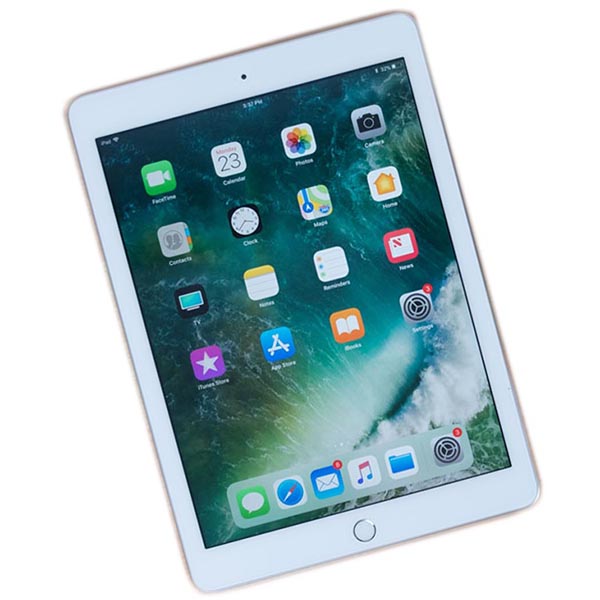
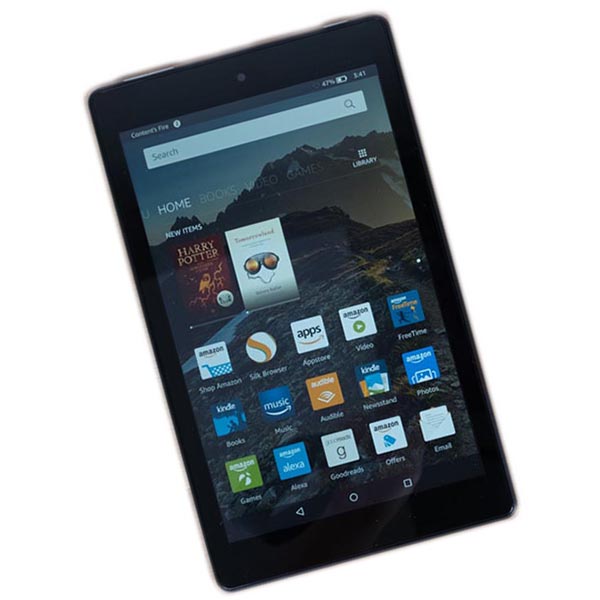

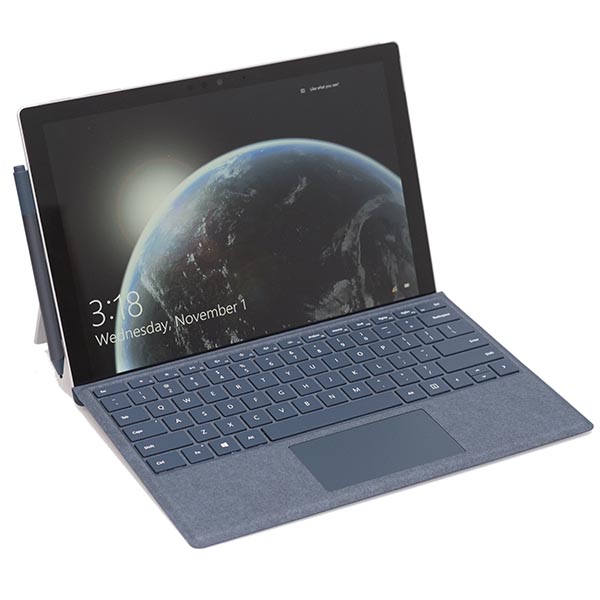


No comments:
Post a Comment